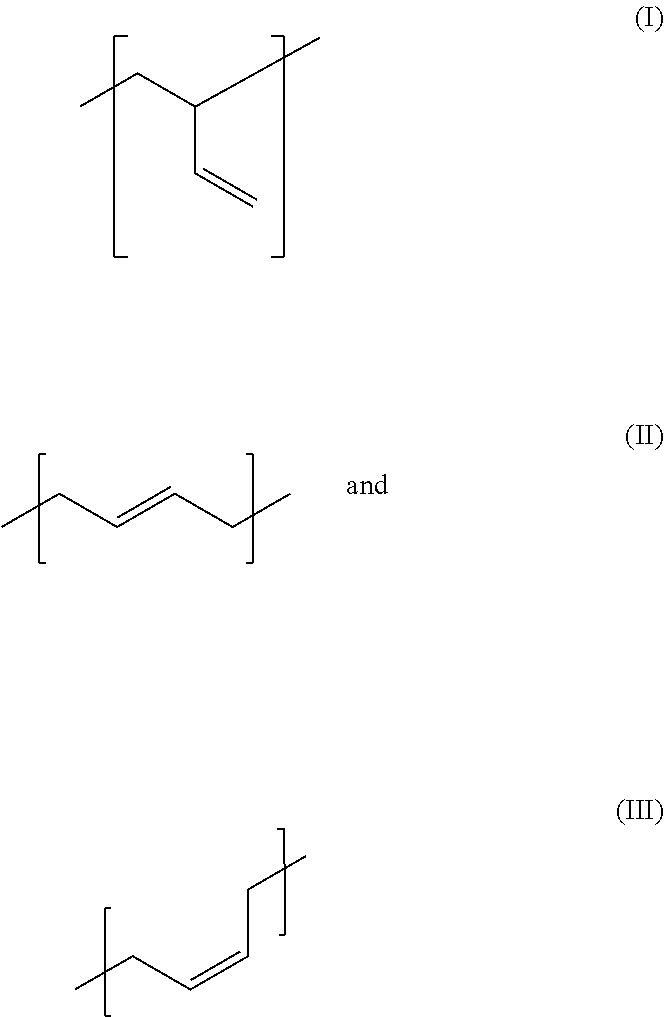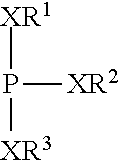Acrylate-Terminated Urethane Polybutadienes From Low-Monomer 1:1 Monoadducts From Reactive Olefinic Compounds and Diisocyanates and Hydroxy-Terminated Polybutadienes for Liquid Optically Clear Adhesives (LOCAs)
- Summary
- Abstract
- Description
- Claims
- Application Information
AI Technical Summary
Benefits of technology
Problems solved by technology
Method used
Image
Examples
example a
Preparation of a Conventional Acrylate-Terminated Urethane Polybutadiene, not According to the Invention (Oligomer Comparison)
[0173]a1)
[0174]2.2 g (0.5 wt. %) BHT is added to a vigorously stirred mixture of 222 g (1 mol) IPDI and 0.05 g (DBTL), to which 116 g (1 mol) hydroxyethyl acrylate (HEA) is added dropwise while feeding dry air over the solution. Once addition is complete, the solution is stirred at 70° C. until the alcohol components of the hydroxyethyl acrylate have been fully converted (generally 2-4 h). Dry air is fed over the mixture during this reaction phase as well. The NCO content of the product is 11.8%.
[0175]a2)
[0176]Next, 77.11 g POLYVEST® HT and 0.05 wt. % of the catalyst (DBTL) were heated to 60° C. under nitrogen in a three-neck round-bottom flask fitted with a dropping funnel and a thermometer. Once the temperature had been reached, 22.85 g of the product of IPDI and HEA described in A) was added through the dropping funnel while stirring; the reaction mixture ...
example b
Preparation of an Acrylate-Terminated Urethane Polybutadiene Using a Low-Monomer 1:1 Monoadduct, According to the Invention (POLYVEST® EP-AT)
[0178]77.11 g POLYVEST HT and 0.05 wt. % of the catalyst (DBTL) were heated to 60° C. under nitrogen in a three-neck round-bottom flask fitted with a dropping funnel and a thermometer. Once the temperature had been reached, 22.85 g VESTANAT® EP DC 1241 (NCO content: 11.6%; IPDI content: 0.05 wt. %) was added through the dropping funnel while stirring; the reaction mixture was stirred for three hours. The end of the reaction was detected by determining the residual isocyanate content (NCO<0.1 wt. %) via titration.
[0179]GPC (polystyrene standard): Mn=3.716 g / mol; Mw=7.165 g / mol.
examples c and d
Preparation of a Formulation with POLYVEST®-EP-AT, According to the Invention
[0180]The amount of acrylate-terminated urethane polybutadiene indicated in table 1 (example B) was placed in a flask along with IBOA and Visiomer® 98. Irgacure® 184 and TPO were added to this and the mixture was homogenized for one hour at 60° C. Table 1 shows the main properties of the formulations.
PUM
| Property | Measurement | Unit |
|---|---|---|
| Temperature | aaaaa | aaaaa |
| Temperature | aaaaa | aaaaa |
| Percent by mass | aaaaa | aaaaa |
Abstract
Description
Claims
Application Information
 Login to View More
Login to View More - R&D Engineer
- R&D Manager
- IP Professional
- Industry Leading Data Capabilities
- Powerful AI technology
- Patent DNA Extraction
Browse by: Latest US Patents, China's latest patents, Technical Efficacy Thesaurus, Application Domain, Technology Topic, Popular Technical Reports.
© 2024 PatSnap. All rights reserved.Legal|Privacy policy|Modern Slavery Act Transparency Statement|Sitemap|About US| Contact US: help@patsnap.com









